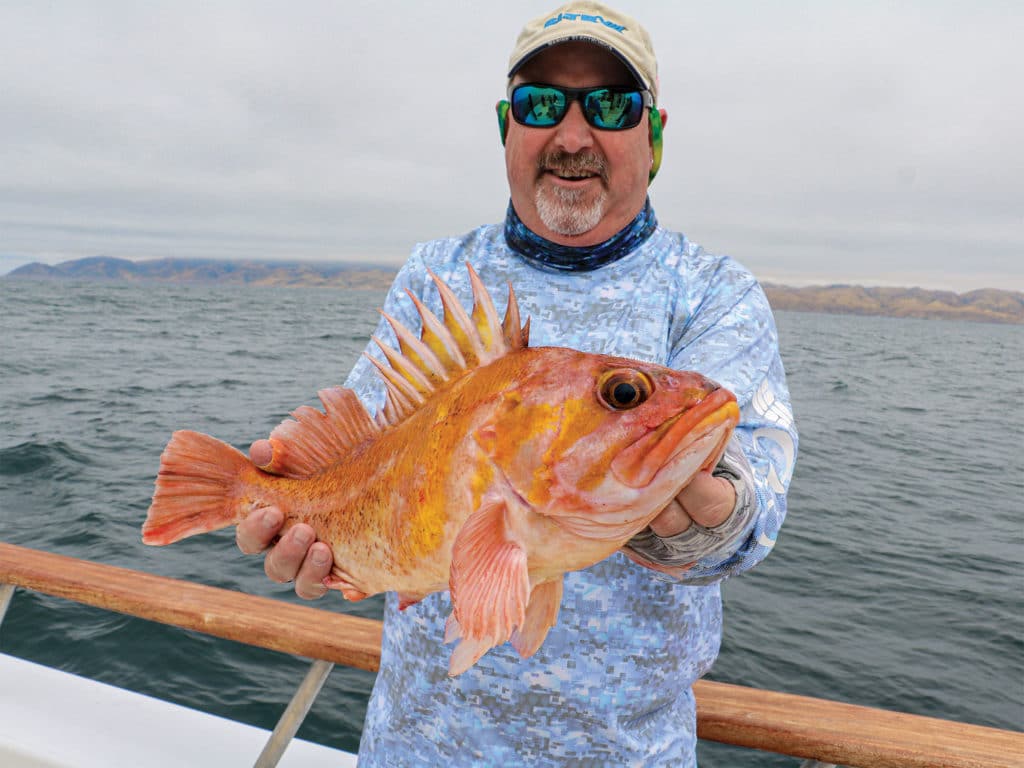
As my heavy jig-and-grub combo plummeted toward the bottom, I had a couple of minutes to think. While always keeping light thumb pressure on the spool to prevent my braided line from overrunning into a tangled mess, I wondered what sort of fish would be first to grab it. Would it be a big, fat vermilion rockfish? Or maybe a chunky chucklehead painted in scales of orange and white? Or perhaps even an alligator-faced lingcod, the apex predator on Southern California’s deep, rocky reefs?
This sort of on-the-sink contemplation is one of the things I love most about rockfishing. On any given drop, you can’t predict which colorful, great-eating bottom dweller you’ll bring to the surface.
Like many Southern California anglers, I eagerly await the March 1 opening of rockfish season south of Point Conception. This springtime ritual shakes anglers out of their winter doldrums and gets them on the water in pursuit of fish that populate a variety of coastal and island hard-bottom areas, typically in waters from 200 to 400 feet.
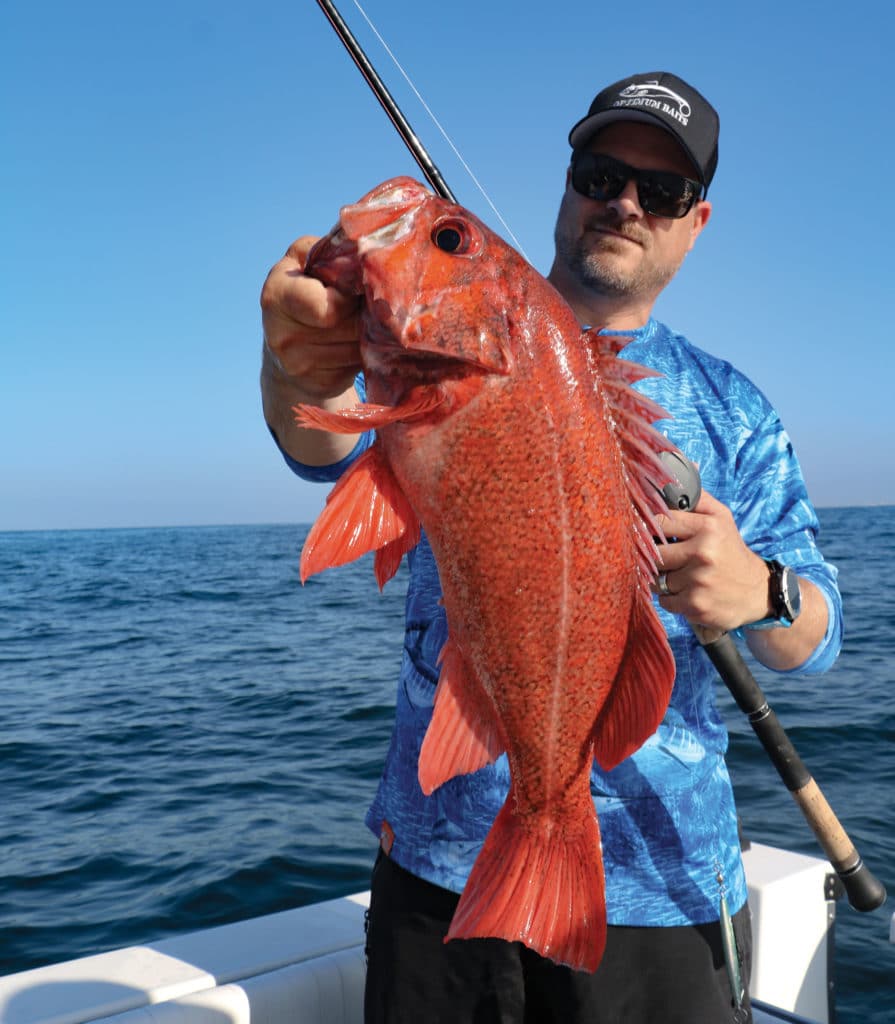
New Zones
As a bonus, the 2021 season brought new regulations extending the allowable fishing depth out to 600 feet, opening up areas that haven’t been fished for decades. This comes as a surprise to California anglers accustomed to the fact that when fisheries managers take something away, it’s usually gone for good.
These new rules don’t mean anglers can find any location that is 600 feet deep or less and legally fish there. All the rules and restrictions relating to Southern California’s vast network of marine protected areas (MPAs) still apply. The Southern Groundfish Management area also incorporates cowcod conservation areas (CCAs), where it is legal to groundfish inside 40-fathom (240-foot) point-to-point lines drawn around Santa Barbara Island, San Nicholas Island, and the Cortez and Tanner banks. No other areas within CCA boundaries are legal to fish, regardless of depth. In essence, the new angling access is confined within a set of 100-fathom point-to-point depth lines established by the Pacific Fisheries Management Council. By virtue of how the lines were drawn, there are hard-bottom areas shallower than 100 fathoms that remain closed, the 60-mile bank and the 9-mile bank off San Diego among them. Conversely, there are some areas anglers can legally fish that are deeper than 100 fathoms yet still fall within the established 100-fathom point-to-point lines.
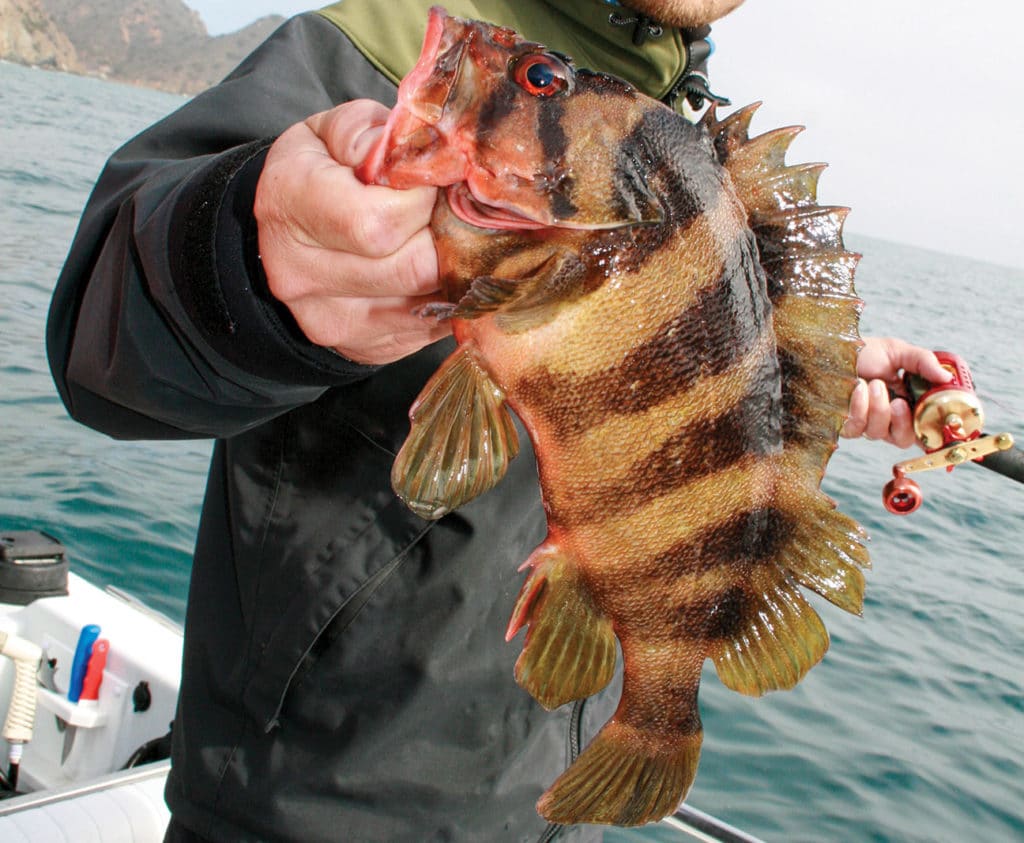
To take advantage of every opportunity while ensuring compliance with the rules, boaters rely on their GPS and chart plotters. By plugging in waypoints for the established 100-fathom depth markers and using these to create point-to-point lines, it is possible to see where you can and cannot fish. A downloadable list of these points is available online at fisheries.noaa.gov/resource/data/depth-based-boundary-lines-west-coast.
Some areas recently opened will be familiar to old-timers, such as the Santa Rosa Flats off the Channel Islands and the Dome in the middle of the Santa Barbara Channel. Private boaters and party boats alike have taken advantage of these to target bigger rockfish. These spots also offer boats limited to coastal waters due to size, range and weather-worthiness to get in on quality rockfishing on par with overnight trips to the Santa Rosa and San Miguel islands.
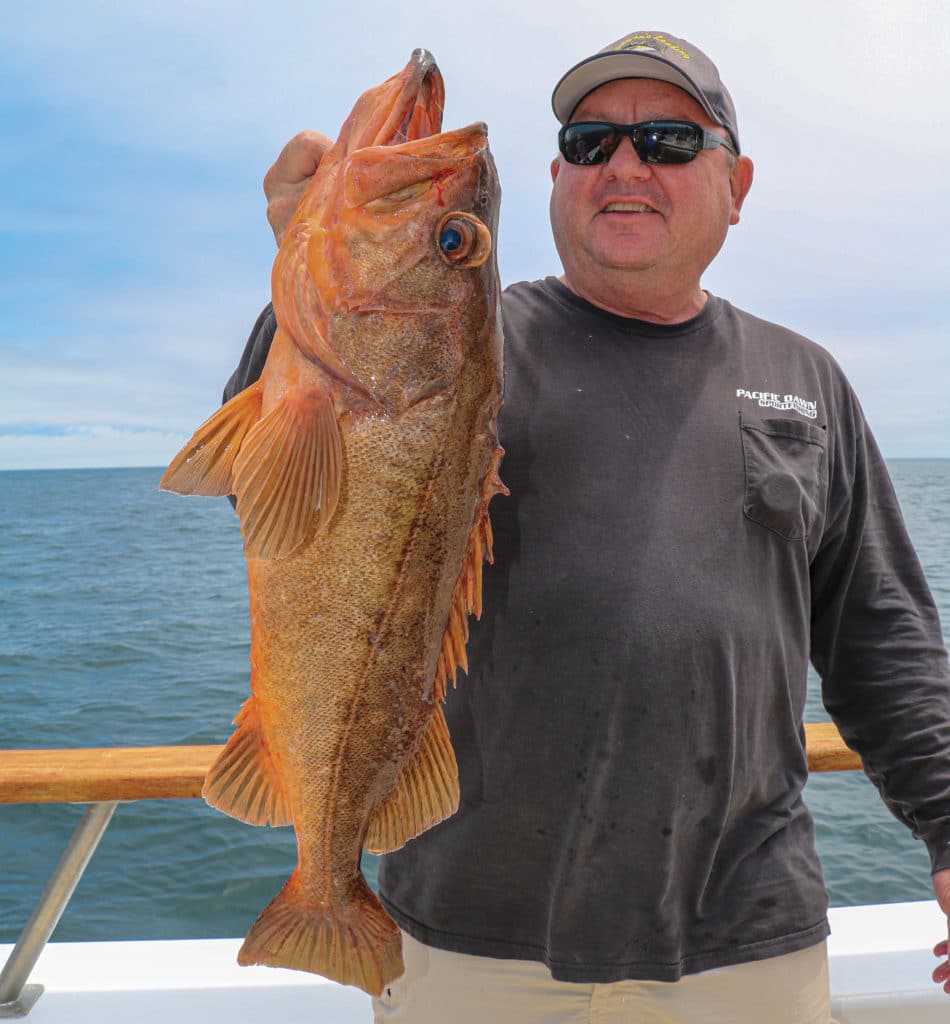
Tweak Tackle and Tactics
Rockfishing rigs are generally simple. The most common is a double-dropper loop rigged with shrimp flies tied on 5/0 hooks, often adorned with squid strips or other dead bait. Anglers targeting bigger rockfish often pin live anchovies, sardines or mackerel on hooks that match the bait and send them to the depths. Using the allowable two hooks optimizes the catch rate and cuts down on time spent reeling up empty hooks.
I fish with lures and keep rigs simple with either a single, heavy jig-plastic combo or, when conditions allow, a large plastic swimbait rigged on a 12- to 16-ounce head. Artificials require more attention from the angler, and deeper waters up to 600 feet make it even more of a challenge.
Capt. Mike Nickerson on Ventura Sportfishing’s Pacific Dawn has been hitting deeper areas out to 500 feet with good results, catching large vermilions, chilipeppers and chuckleheads. He also sees these depths challenge unprepared customers.
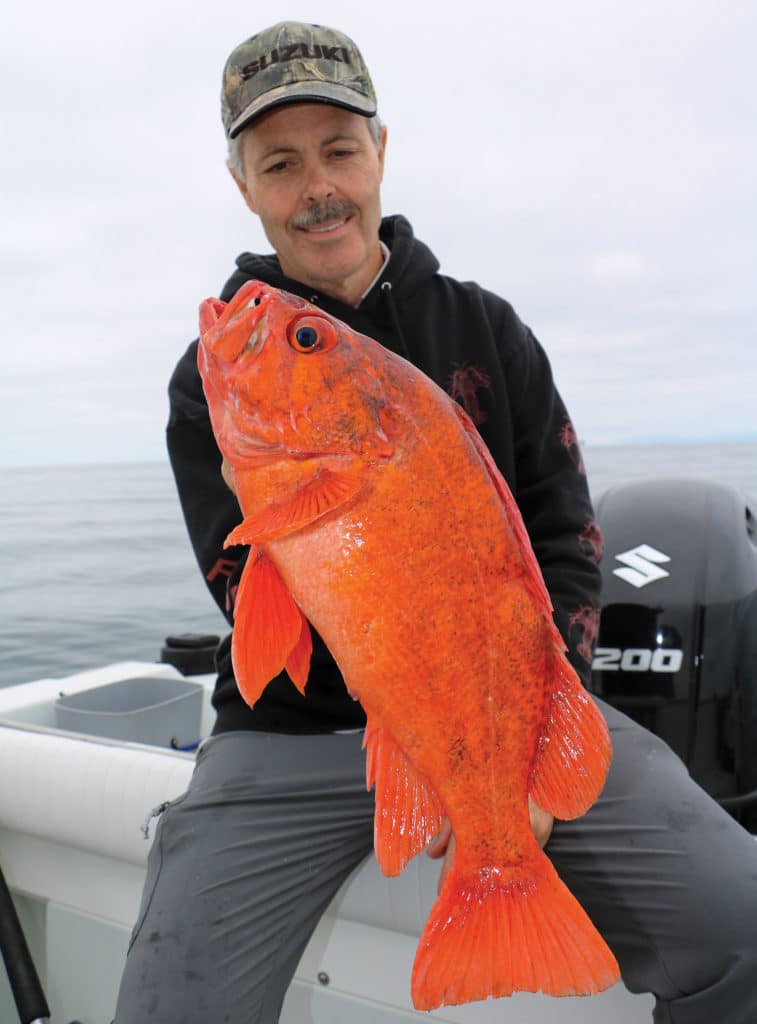
“I made one drift in 94 fathoms, and while some anglers were reeling in nice rockfish, others never made bottom,” Nickerson says. “Some were fishing straight monofilament, which is tough even in shallower water. Others had too much top shot over their braid, which makes a difference in how quickly your rig sinks.”
To go from more-standard rockfishing depths of 300 to 350 feet to waters as deep as 600, Nickerson recommends increasing your weight to at least 20 ounces and tying just 3 feet of mono or fluoro leader straight to 65-pound braid.
Avid jig fishermen still successfully ply their trade if they fish heavy 16-ounce lures and stick with a short leader. Fishing in either the bow or a stern corner, lob the jig as far down-drift as possible; with luck, you’ll hit bottom about the time the boat drifts over your lure. Lift the jig off the bottom with a sharp sweep of the rod, then let it fall until it just ticks the bottom. By keeping in contact with the lure on the fall, you’ll be able to feel the bite and set the hook. As the boat drifts away, you’ll need to scope back to stay in contact with the bottom. You may only have a few minutes in the strike zone before you need to reel up and start over.
Nickerson adjusts his captaining techniques as well. “Sometimes there’ll be an undercurrent that’s opposite the surface current, where you know the lines should be drifting one way, but they’re actually going the other way. When this happens, I have everybody step up to 2 pounds of weight,” he says.
Rockfish have never been known as tackle-busting gamefish, but there is allure in bringing something unknown up from the depths. With more than 50 different species of rockfish in the waters off the SoCal coast, you never know what you might catch. New untapped frontiers just add to the fun for Southern Californians in search of deep adventure.
Read Next: How to Fish for Bottomfish
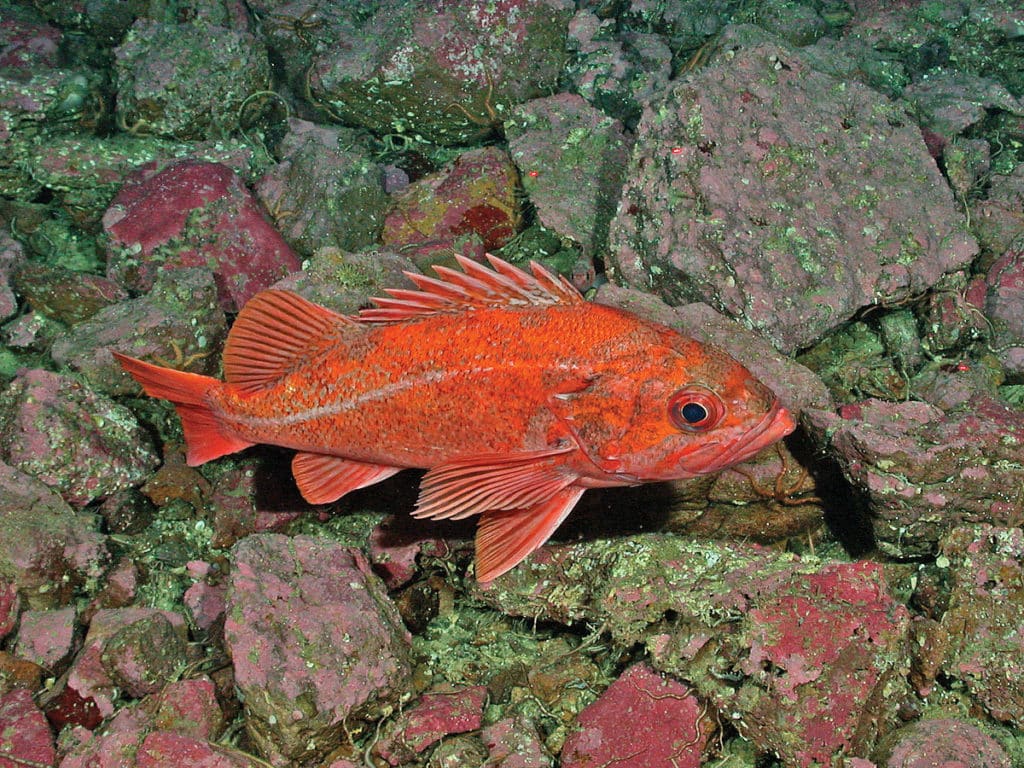
Seeing Red
A limit of 10 vermilion rockfish—known as “reds”—has long been the measure of successful rockfishing. Its size (up to 10 pounds), availability and flaky white fillets put this brilliantly colored species on a pedestal as Southern California’s top bottomfish. However, new regulations for SoCal for the 2022 season come with bitter pills: a sub-limit of four vermilion rockfish within the overall 10-fish bag limit. Even more Draconian is a reduction in the sub-limit for the almost equally popular copper rockfish to just one, as well as one of the less popular quillback rockfish. This is all complicated by the fact that rockfish can only be released by using specialized descending devices. The rule has created situations where boats have to pull away from great fishing to avoid going over their limit on the popular species. “Many times last season (when the sub-limit for vermilions was five), I had to run away from a hot red bite,” Nickerson says. The plus side is that Southern California waters—particularly those around the Channel Islands off Ventura, Oxnard and Santa Barbara—offer plenty of options. “Guys are starting to appreciate the other great rockfish, like widows, gophers and bank perch. While they may not get as big, when it comes to eating quality, I’ll take those over reds any day,” Nickerson says. Learn more at wildlife.ca.gov.
SWS Tackle Box
- Rods: Fast-action 7- to 8-foot graphite rod rated for 30 to 50 pounds
- Reels: Conventional lever- or star-drag reel able to hold 400 yards of braid
- Line: 65-pound braid
- Leader: 3 feet of 40-pound monofilament or fluorocarbon
- Lures: 16-ounce heavy-iron jig with a single hook, rigged with a 6-inch plastic or Gulp! grub
SWS Planner
What: Deepwater rockfishing
Where: Southern California
When: March 1 through December 31
Who: Anglers with craft from 22 feet up, or book a spot through one of these charter landings:
Ventura Sportfishing
805-676-3474
Channel Islands Sportfishing
805-382-1612
channelislandssportfishing.com
22nd Street Landing
310-832-8304









